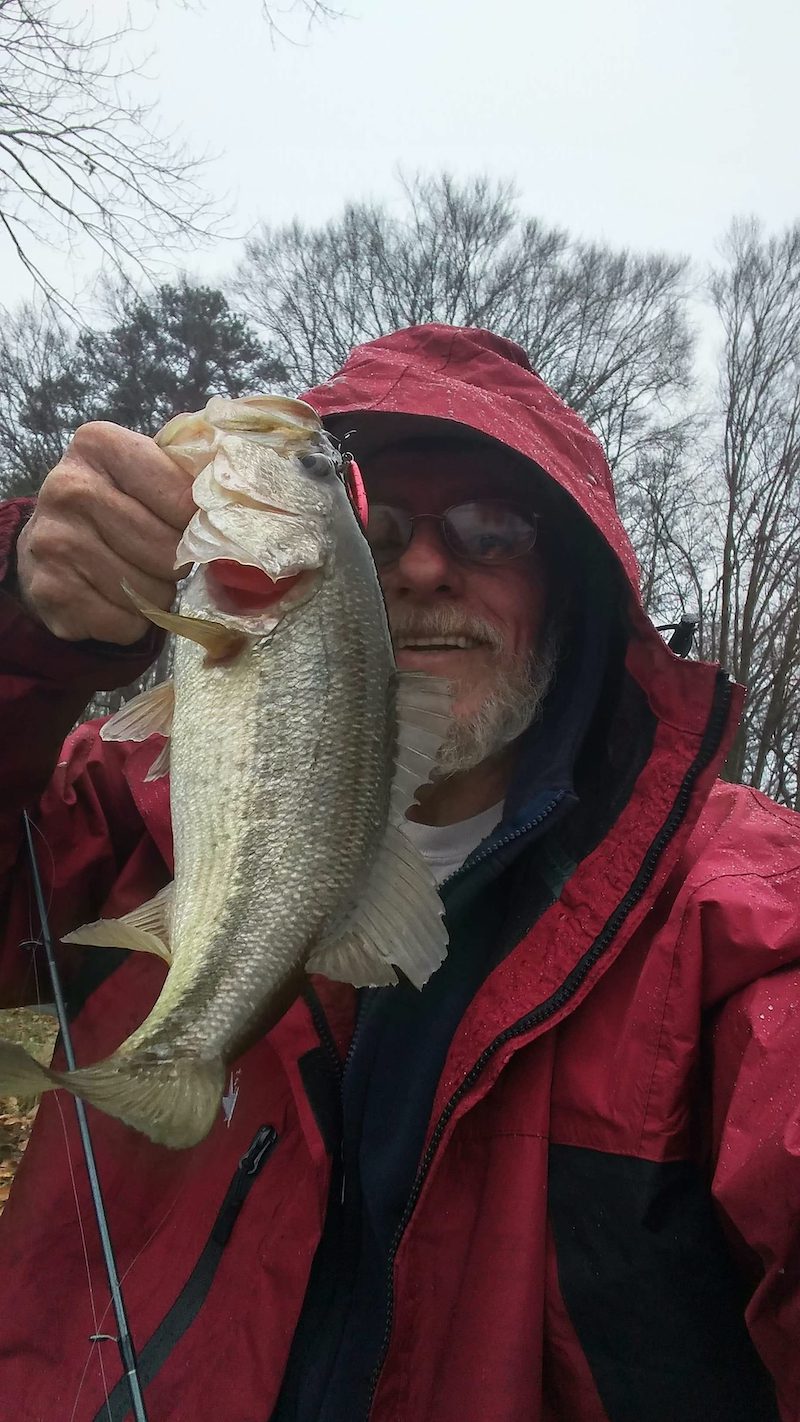In Every Life a Little Rain Must Fall
Fishing after the Rain
by Bruce Callis
[print_link]
The weather can be great one day and terrible the next this time of year. Depending on the day, it can rain or snow, or a little of both. We know that we need rain to fill ponds and lakes this time of year. We also know that it helps keep the ground cover wet, cutting down on the fire danger. But it sure can put a damper on our fishing. Knowing what to look for can make or break a day of fishing.
Fishing before the front comes through can be a fun time, but what about after the rain stops? It can be tough to say the least. Understanding what is happening around us is the key. Rain brings rejuvenation to the land and water. Rain falling directly into the pond or lake adds much needed oxygen to the water. And the runoff from the rain actually can be even more beneficial. It washes an influx of microorganisms, grubs and worms into the water, which draws baitfish to them. And in turn, it causes the bass to follow the baitfish into the oxygen rich water. And depending on the amount of rain, it can be either clean, fresh water or full of soil making it muddy. The intensity and amount of rainfall will also determine how long that runoff will continue to feed into the water. A heavy rain can continue to feed into the water for a couple days.
Runoff also helps create current, especially where it empties into backwater areas and coves. The more turbulence the runoff creates, the more oxygen is created. The higher the oxygen content, the higher the metabolism for the bass, and the more active they become. Another factor is what type of rain. Is it a warm rain or a cold rain, each has different factors. A cold rain brings in cold water, and for us as anglers, that is bad. Cold water slows a bass’ metabolism. That doesn’t mean you can’t catch them, just that it becomes more difficult. The bass will not run to the cold water, but rather seek out the warmer water. If it is a warm rain, then we need to go towards the runoff. Where the runoff meets the pond or lake, it can create a mud-line in the water. Where the two mix is the ideal area to fish. Bass will be holding along this edge in the water waiting to feed.

Another factor for fishing after the rain is the weather conditions. If it is overcast, and most likely low pressure, then the bass are more active and look to the runoff. If there are bluebird skies, and a high pressure, then the bass are going to be looking to go deeper and to shade. This is the time to target structure and fish close to it. Knowing where the bass are likely to gather is also a key factor.
Wind is another factor. Wind breaks up the surface of the water and allows less light penetration, thus allowing the fish to be more active. Wind pushes bait to the far shore, and where the bait goes, so do the bass. If you are on shore, fish into the wind, and in a boat, fish with the wind, casting to the windy shoreline. Look to the points and key features along the shore. If grass is present, work your baits directly along and over the grass. Yes, the wind can make boat control difficult, almost impossible at times, just remember to work with the wind and make fishing easier. Don’t be afraid to anchor down to work an area. If you don’t have anchor poles, use two anchors, one in the front of the boat and one in the rear to help control the swing of the boat.
There are no simple rules to fishing after the rain. There are so many factors to consider, how much rain, the type of rain, the water temperature, atmospheric conditions, the sky conditions, and the wind. But knowing what to look for under all the conditions will help increase your chances of finding and catching bass. Either way, you can’t catch them sitting at home. Go out and put the knowledge to work and find the bass. Each day is a chance to learn and become a better angler. Be like Bruce, just go fishing and do it! Catch a hawg!

